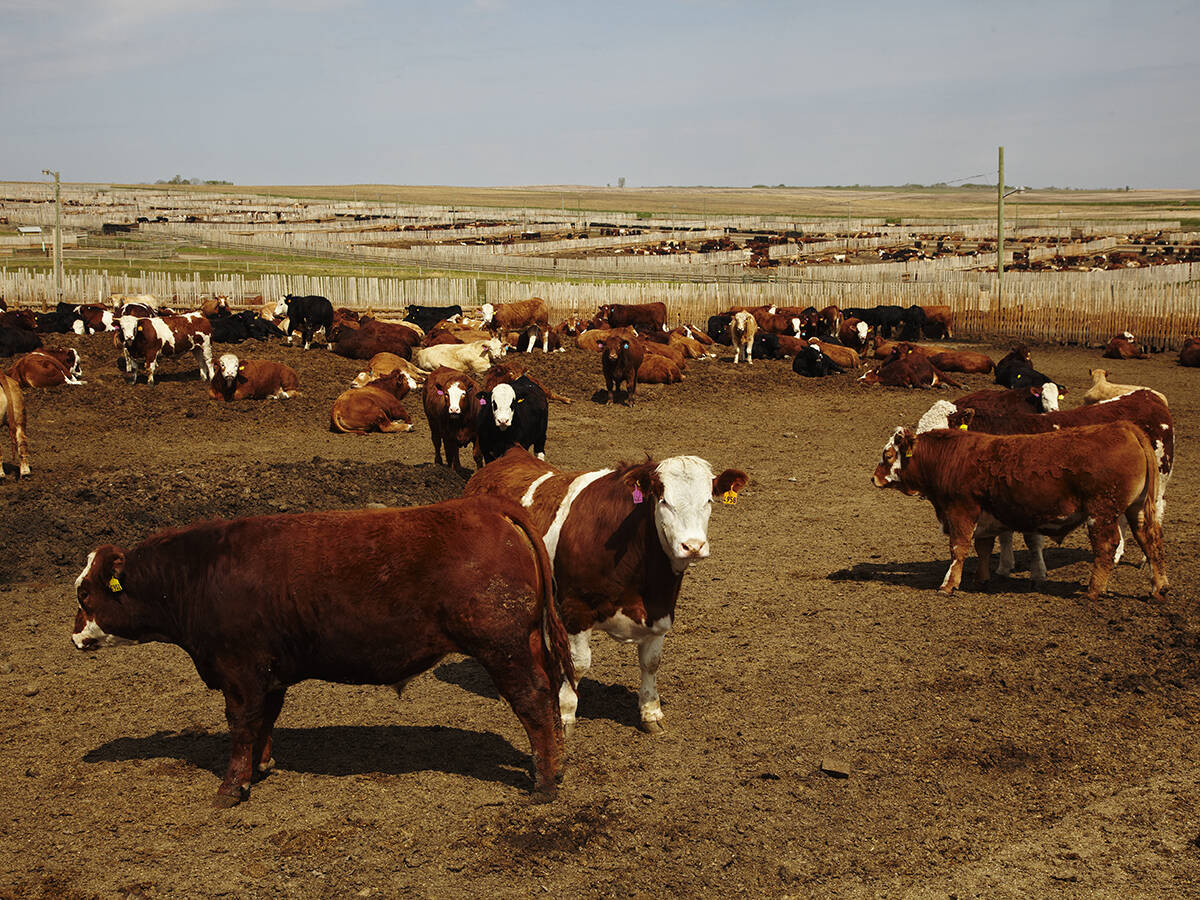This cattle market information is selected from the weekly report from Canfax, a division of the Canadian Cattlemen’s Association. More market information, analysis and statistics are available by becoming a Canfax subscriber by calling 403-275-5110 or at www.canfax.ca.
Fed prices ease
Alberta direct cattle sales saw a modest shift last week with a smaller cash offering and more cattle marketed on a formula grid. Despite fewer cash traders and slightly tighter seasonal supplies, weighted average prices eased modestly lower. Most trade last week was reported dressed at $250 per hundredweight delivered, scheduled for the first week of April.
Read Also

Canfax cattle market report – November 13, 2025
The Canfax cattle market report for November 13, 2025. Fed & feeder cattle prices, butcher cow trends, and cutout market insights.
Western Canadian fed slaughter for the week ending March 13 was one percent smaller than the previous week at 40,700 head and year to date was 15 percent larger than year ago at 405,979 head. Steer carcass weights dipped by three pounds to average 905 lb., which was 4 lb. larger than year ago.
Canadian fed cattle/cow exports to the U.S. for the first week of March were 13 percent lower than the previous week at 9,472 head. Year to date exports were down seven percent, totalling 91,096 head.
The recent TruHarvest Meats start-up added competition in Ontario packing but the fed market continues to struggle with ample supplies. Most Ontario trade last week was dressed from $240 per cwt. delivered.
Market ready supplies should continue to tighten and carcass weights are manageable. The market typically gains momentum by the end of March.
In the U.S., moderate live trade was reported steady to $1 per cwt. higher in the south, at US$114-$115 per cwt. Live trade in the north was steady to $1.50 per cwt. higher in a $113-$115 per cwt. range. Early March steer weights were one lb. larger than the previous week at 900 lb.
Cows trend higher
Western Canada cow slaughter totalled just over 8,300 head last week, the second largest volume seen this year. Marketed cows are likely coming out of feedlots. Those placed into feedlots or backgrounded in January are likely profitable if sold today. Cows through the sale ring were $1 to $2 per cwt. higher while dressed bids were up to $5 per cwt. stronger.
Last week butcher cows hit a new annual high. For mid-March, D2 cow prices are in line with the three-year average, at $87.17 per cwt. D3s averaged $77.29. On a cash to cash basis, Alberta cows are trading at a $10 per cwt. premium against U.S. utility cows.
Bred cows traded from $1,550-$2,800 per head last week and bred heifers sold in a range of $1,675-$2,550 per head.
Feeder prices lower
Over the past four weeks, calf and feeder prices have dropped around $5 per cwt. Most strength is in the heifer market. On average, heifers are trading $8.85 per cwt. higher than last year while steer prices are $4.87 per cwt. above last year.
The strength of the heifer market is surprising given barley prices are more than 30 percent higher than last year. As barley prices rise, usually the price spread between steers and heifers widens. That has not been the case this year.
So far this year 900+ heifers have maintained a very narrow trading range with prices from $152-$158 per cwt. Over the past 10 years the average increase from first half of the year lows to second half highs stands at 25 percent. That would put second half highs around $190 per cwt. However, a 25 percent increase is not likely.
Canadian feeder cattle exports to the U.S. remain historically low and Canada is well on track to be a net importer of American feeders again this year. Based on USDA data, by early March just over 10,500 feeders have been exported to the U.S. while Statistics Canada reports just under 27,000 head of U.S. feeders were in imported in January alone.
Demand for breeding quality heifers continues to be strong. Depending on weight and quality, replacement heifers are trading from $1,350-$1,675 per head. In general prices are roughly $50-$150 per head stronger than last year.
U.S. cutout rallies
In U.S. beef trade, cutout values traded unevenly last week with Choice firming almost $2 per cwt. higher than the previous week to average US$228.61 and Select slipping by $2 per cwt. to average $218.11.
Total U.S. slaughter last week was estimated five percent lower than year ago at 624,000 head.














